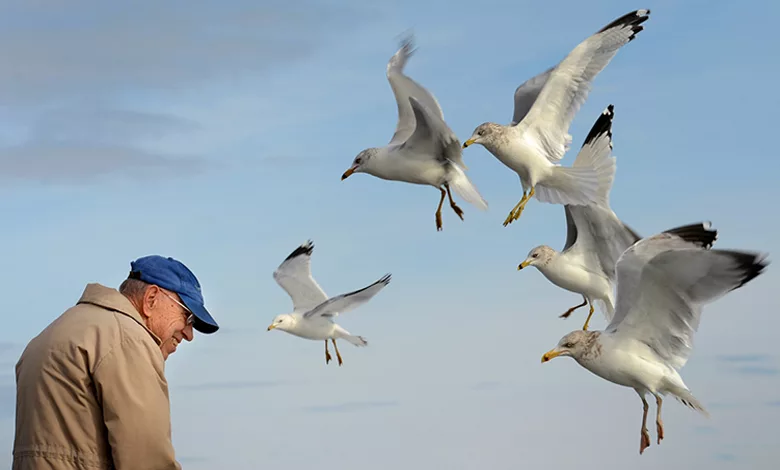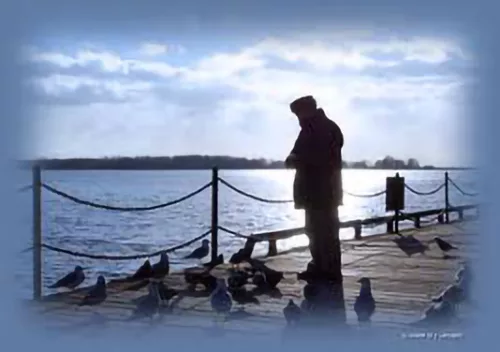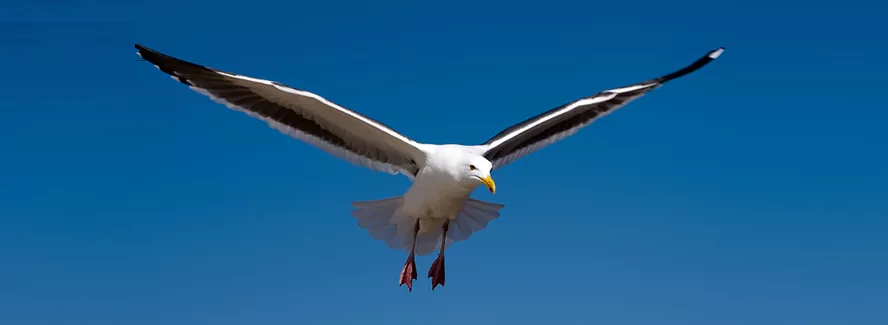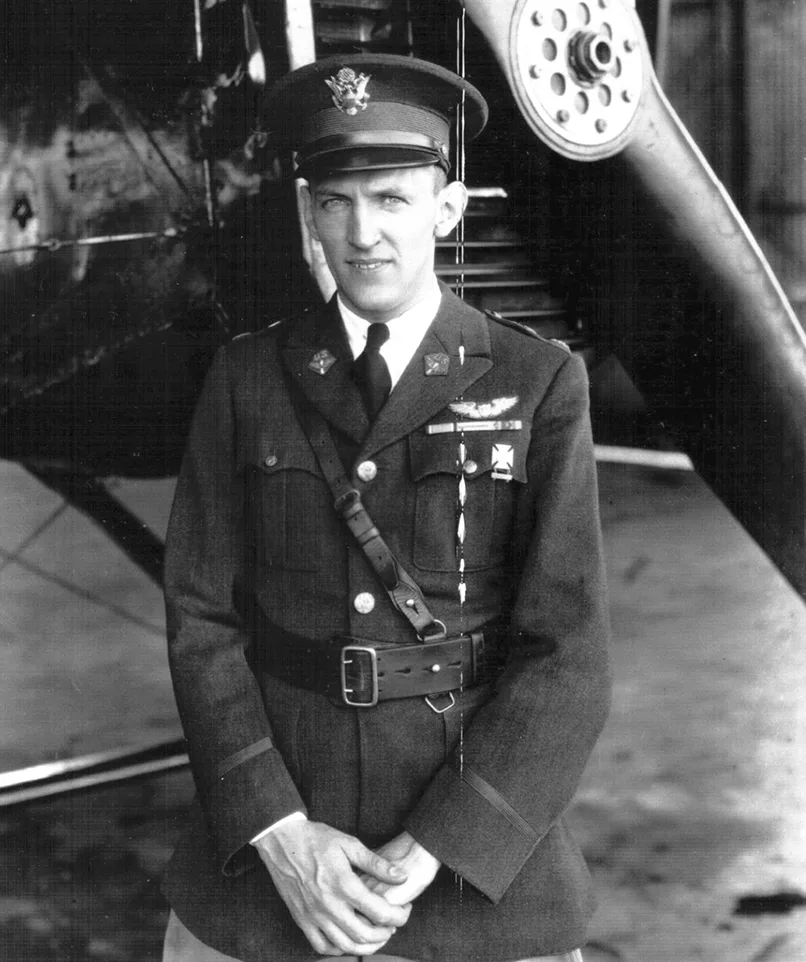The Old Ace Fighter Pilot and the Seagulls
Eddie Rickenbacker: a true war hero

It happened every Friday evening, almost without fail, when the sun started dipping into the blue ocean. Old Ed came strolling along the beach to his favorite pier. Clutched in his hand was a bucket of shrimp. Ed walks out to the end of the pier. Except for a few joggers on the beach, he almost has the world to himself. The light of the sun is a golden bronze now.
Standing on the end of the pier, Ed is alone with his thoughts and his bucket of shrimp. Before long, he has plenty of company. Up in the sky, it seems like a thousand white dots come screeching and squawking, winging toward that lanky frame standing on the end of the pier. Dozens of seagulls have enveloped him, their wings fluttering and flapping wildly. Ed stands there tossing shrimp to the hungry birds. As he does, if you listen closely, you can hear him say with a smile, ‘Thank you. Thank you.’
In a few short minutes, the bucket is empty. But Ed doesn’t leave. He stands there lost in thought, as though transported to another time and place.
When he finally turns around and begins to walk back toward the beach, a few of the birds hop along the pier with him until he gets to the stairs, and then they, too, fly away. Ed quietly makes his way down to the end of the beach and home.
If you were sitting on the pier with your fishing line in the water, Ed might seem like just another old guy, lost in his own world, feeding the seagulls with a bucket full of shrimp. Rituals can look either very strange or very empty. They can seem unimportant or even silly.

Old folks often do strange things, at least in the eyes of some of the younger generation.
Most of them would write Old Ed off in Florida.
That’s too bad. They’d do well to know him better.
His full name is Edward Vernon Rickenbacker. He was a famous hero in World War I and WWII.
On one of his flying missions, he and his seven-member crew went down in the Pacific. All but one of the men survived. They crawled out of their B-17 plane and climbed into a life raft.
Captain Rickenbacker and his crew floated for days on the rough waters of the Pacific. They fought the sun. They fought sharks. Most of all, they fought hunger and thirst. By the eighth day, their rations ran out. No food. No water. They were hundreds of miles from land, and no one knew where they were or even if they were alive.

One afternoon, they had a simple devotional service and prayed for a miracle. They then tried to rest. Eddie leaned back and pulled his military cap over his nose. As time slowly dragged on, all he could hear was the slap of the waves against the raft. Suddenly, he felt something land on the top of his cap. It was a seagull!
Old Ed would later describe how he sat perfectly still, planning his next move. With a flash of his hand and a squawk from the gull, he grabbed it and wrung its neck. He tore the feathers off, and he and his starving crew made a meal of it – a very slight meal for the men. Then, they used the intestines for bait. With it, they caught fish, which gave them food and more bait. The cycle continued. With that simple survival technique, they endured the rigors of the sea until they were found and rescued after 24 days at sea.
Eddie Rickenbacker lived many years beyond that ordeal, but he never forgot the sacrifice of that first life-saving seagull— And he never stopped saying, ‘Thank you.’ That’s why, almost every Friday night, he would walk to the end of the pier with a heart full of gratitude and a bucket full of shrimp to feed the seagulls.

Rickenbacker did a lot in his life. Before World War I, he was a successful race car driver. In World War 1, a fighter ace pilot, and Medal of Honor recipient. After the war, he became president of Eastern Airlines.
After the U.S. entered World War II, in late 1942, at age 52, Secretary of War Henry Stimson and General Henry H. “Hap” Arnold asked Rickenbacker for his help.
He was to travel to the Pacific as a $1-a-day- nonmilitary observer to evaluate and report on the status of U.S. Army Air Forces combat units.
After the rescue and recovery, his experience from the crash and time stranded at sea gave him a unique perspective. He reported to Stimson and General Arnold practical suggestions for survival equipment, including an information sheet on rafts, rainwater, and saltwater distilling kits.
This retelling of a true American hero has been passed along by families, friends, and in various outlets to remind us of the trials and sacrifices that brave men endured to keep freedom alive.
Rickenbacker’s story exemplifies a few life lessons; first, we should be more understanding of the older generation. You never know what they have accomplished during their lifetime. Plus, we do not know what adversity we might face in life, but when we use our talent, mentally and physically, we can overcome many things, even if it feels as seemingly meaningless as a seagull. And just like Eddie, it is always a good thing to pay it forward.
To learn more about Captain Rickenbacker’s mission, crew, survival, and rescue, visit historynet.com
References: historynet.com, 2004 | National Archives.gov




